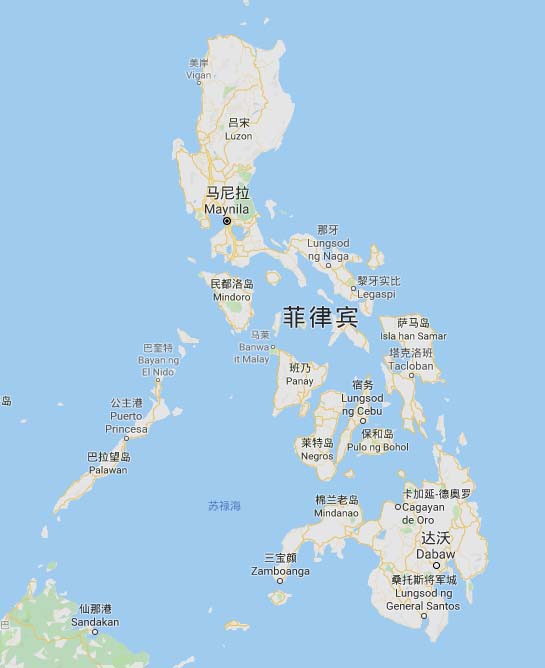- Current Location:
- Home>
- Investing/ASEAN>
- Philippines
Introduction to the Philippines
[country name]The Republic of the Philippines.
 [area] 299700 square kilometers.
[area] 299700 square kilometers.
[population] 198 million (August 2015). Malays make up more than 85% of the country's population, and others include Tagalus, Ilois, Bandya, Visaya and Bikol. Ethnic minorities and descendants of foreign origin are Chinese, Arabs, Indians, Spaniards and Americans. And a small number of aborigines. There are more than 70 languages. Mandarin is Filipino based on Tagalog and English is the official language. About 85% of the people believe in Catholicism, 4.9% believe in Islam, a few believe in independent religion and Protestantism, most of the Chinese believe in Buddhism, and most of the aborigines believe in primitive religions.
[capital] the population of (Metro Manila), in Greater Manila is 12.88 million (October 2015). The average annual temperature is 28 ℃.
[head of State] Rodrigo Roa Duterte (Rodrigo Roa Duterte), took office in June 2016.
Independence Day (National Day): 12 June; Badan Day (in memory of soldiers killed in World War II): 9 April; Heroes Day (in memory of the martyrdom of the Founding Father): 30 December; major Christian festivals (such as Christmas, etc.).
[profile] is located in southeastern Asia. The bus Strait is far from Taiwan Province of China, south and southwest across the Sulawesi Sea and Barabak Strait with Indonesia and Malaysia, west by the South China Sea and east by the Pacific Ocean. There are more than 7000 large and small islands, of which 11 major islands, such as Luzon, Mindanao and Samar, account for 96 per cent of the country's total area. The coastline is about 18533 kilometers long. A monsoon rainforest climate, high temperature and rain, high humidity, many typhoons. The average annual temperature is 27 ℃ and the annual precipitation is 2000-3000 mm.
Around the 14th century, a number of separatist kingdoms composed of indigenous tribes and Malay immigrants emerged in the Philippines, the most famous of which was the Sulu Kingdom, which rose in the 1470s. In 1521, Magellan led a Spanish expedition to the Philippines. Since then, Spain gradually occupied the Philippines and ruled for more than 300 years. On June 12, 1898, the Philippines declared its independence and established the Republic of the Philippines. In the same year, the United States occupied the Philippines under the Treaty of Paris signed after the Spanish War. In 1942, the Philippines was occupied by Japan. After the end of World War II, the Philippines was once again colonized by the United States. On July 4, 1946, the United States agreed to the independence of the Philippines. After the independence of the Philippines, the Liberal Party and the Kuomintang took turns in power. In 1965, Kuomintang candidate Marcos was elected the sixth president after World War II and was re-elected three times. In August 1983, opposition leader Benigno Aquino was murdered, leading to political unrest. On February 7, 1986, the Philippines held an early presidential election. Benigno Aquino's wife, Corazon Aquino, became president with the support of the people, the Catholic Church and the army. Since then, Ramos and Estrada have been elected president according to the constitution. In January 2001, Estrada was forced to step down because of a bribery scandal, and Vice President Arroyo took over as president. In June 2004 Arroyo was elected President. In June 2010, Liberal Party candidate Aquino III became the 15th president of the Philippines. In June 2016, Democratic people's Power Party candidate Duterte became the 16th president of the Philippines.
[politics] implement a presidential system. The President is the head of State, head of Government and Commander-in-Chief of the Armed Forces. President Duterte advocated the fight against crime, drugs and corruption, vigorously engaged in the fight against terrorism, restored the trust and confidence of the people in the government, and engaged in dialogue with the Communist Party of the Philippines, the Moro Islamic Liberation Front and other organizations in the south. Promote national unity and national reconciliation. With the exception of terrorism and separatist activities in the southern region, the political situation in the Philippines is generally stable。
PREV:Philippine Government Investment priority Plan.
PREV:恒信泰富:跨境融资并购服务
- Why Choose Singapore
- 10 Advantages of Singapore formation
- Tax Exemptions for Singapore Statrups
- Why Choose ERI
- We are Chartered Accountant
- We are Chartered Secretary
- 20 years'experience,served 8000+clients
- Strategic Partners
- Singapore UOB
- Singapore OCBC
- Newsletter Subscription
- Government,Business,Funding,Listing,Finance
- Weekly updates,welcome to subscribe FOC
- Partne with us
- Opportunities for mutual prosperity

 0065-62250588
0065-62250588







